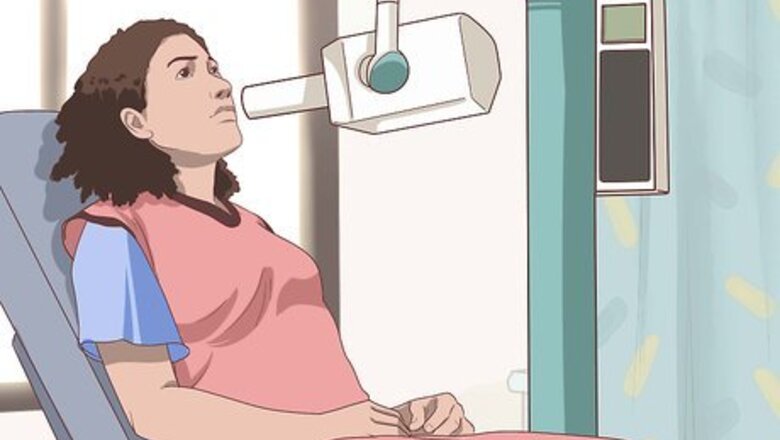
views
X
Trustworthy Source
Mayo Clinic
Educational website from one of the world's leading hospitals
Go to source
Luckily, periodontal disease can usually be treated and kept under control to prevent it from turning into a severe case. While home care is important for preventing gum disease, once periodontal disease has set in, treatment must begin with a trip to the dentist or periodontist for a diagnosis and a special deep cleaning. After that, the disease can be managed with diligent home care and routine check-ups in many cases, but in others, additional medical intervention may be necessary.
Beginning to Treat Your Periodontal Disease
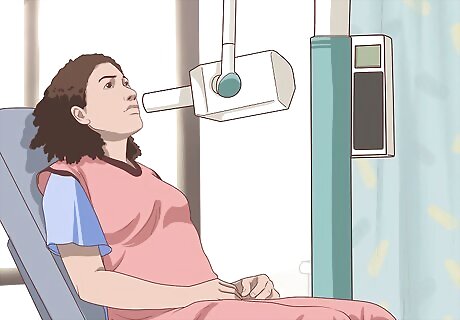
Visit your dentist for an exam. Your dentists will examine your teeth and gums, take x-rays, and assess the extent of your gum disease by measuring the depth of periodontal pocket. She will then have you schedule a deep cleaning and give you instructions on oral hygiene and home care leading up to that appointment. It is very important that you follow these instructions carefully. Your dentist may also refer you to a periodontist, a dental specialist who has received three additional years of training in treating and managing the effects of gum disease.
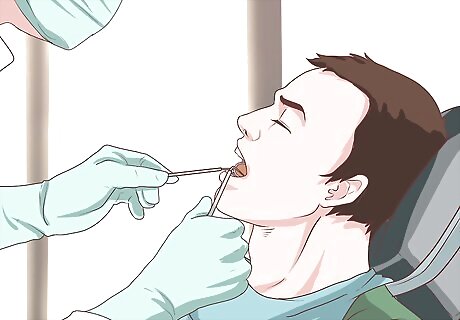
Get a deep cleaning of your teeth and gums. During deep cleaning, tartar is removed through scaling and root planing. Scaling removes tartar from your teeth and below the gum line where aggressive bacteria forms. This can be done with instruments, laser, or ultrasound. Root planing smooths the surface of the tooth root. It prevents additional tartar and bacteria from accumulating, and eliminates bacterial byproducts that cause inflammation or slow healing. It is common to be nervous about the deep cleaning, but remember that it is an ’’extremely’’ important first step to treating a serious condition, and most people find it is quite tolerable. Many dentists offer anesthesia options for the deep cleaning, ranging from topical numbing gel, to numbing injections, nitrous oxide, and in some cases full sedation. If you are nervous, let your doctor know ahead of time, and speak up during the appointment if you experience pain or discomfort.
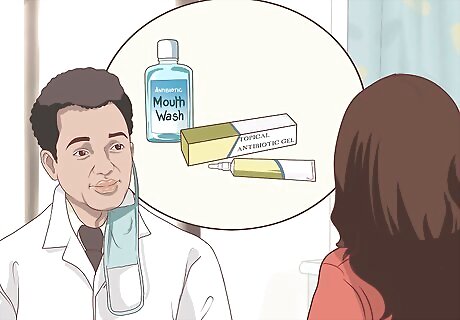
Fill your prescriptions. Your dentist or periodontist may determine that antibiotics are necessary to treat your periodontal disease. After root planing, he may insert antibiotic chips in the gum pockets that will slowly dissolve and release medication to kill bacteria in a small area without influencing your entire body. He may also prescribe one or more of the following: oral antibiotics, a prescription antibiotic mouthwash, or a topical antibiotic gel to apply to your gums daily. Be sure to fill these prescriptions right away and use them as directed.
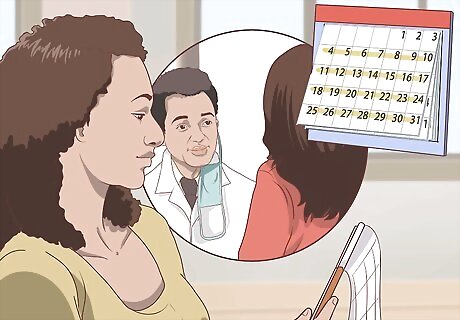
Schedule a follow-up appointment. After your deep cleaning, you will need to see your dentist more frequently so that she can measure the periodontal disease pockets and ensure that they are healing. If the disease is not improving sufficiently, she will then make recommendations for further treatment. Your first follow-up will probably be scheduled for 1 month after your deep-cleaning, with additional check-ups every three months after that, until the disease has subsided.
Treating Periodontal Disease at Home
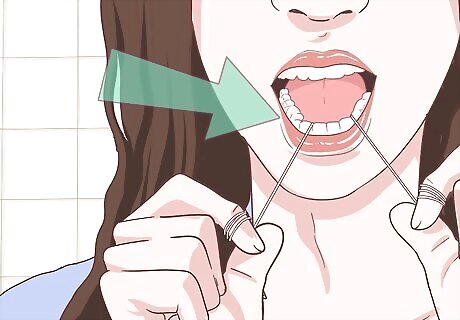
Floss your teeth at least once a day. Begin with an 18-inch piece of floss. Wrap it around your two middle fingers leaving a gap of 1 to 2 inches in between. Then slide the floss between two teeth, and wiggle it up and down and back and forth, several times. Keep in mind that plaque and food can get stuck under the gum line, so this is what you want to target with the floss. Be sure to wrap the floss around each tooth, and floss all the way to your gums, extending as far as you can without causing discomfort. Then repeat the process on the next tooth, moving to a new section of the floss, as it becomes soiled or frayed. Make sure that once you have placed the floss between two teeth you are flossing two surfaces. Once you have this down, the entire process should only take two or three minutes per day. If you are unsure about your flossing technique, be sure to ask your dentist or hygienist for tips when you are in for your exam.
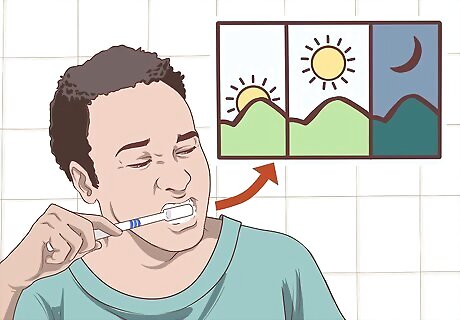
Brush your teeth two or three times a day with a soft tooth brush. Be sure to brush for at least two minutes per session, and pay special attention to cleaning the gum line. Any toothbrush will do, but electric toothbrushes are especially effective. Also be sure to use a toothpaste containing fluoride. Since periodontal disease is a bacterial infection, some dentists also recommend a toothpaste that contains the antibacterial ingredient triclosan, such as Colgate Total).
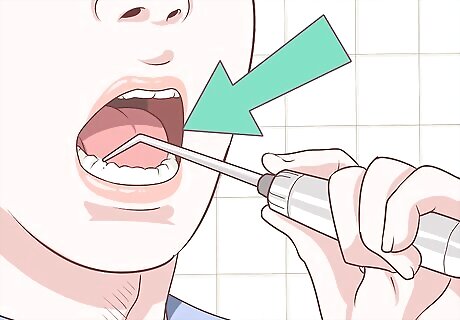
Irrigate your gums daily. If possible, acquire a dental irrigator such as a Water Pik, Hydro Floss, or similar tool, and use it twice per day. Although these devices might seem expensive, they are very good at fighting periodontal disease, and are a fraction of the cost of even a single dental cleaning. Dental irrigators last up to several years and they are great for gum massage, getting rid of plaque, or cleaning around dental implants

Rinse with an antimicrobial mouthwash two or three times a day. This helps to reduce bacteria in your mouth and prevent further infection. If your dentist recommended a prescription mouthwash, use that, otherwise an over-the-counter brand will work fine. Just be sure to read the label and choose using a germ-fighting formula like Listerine or Crest Advanced. You can also put mouthwash into a dental irrigator’s reservoir and then clean all around your mouth with higher pressure. Be aware some prescription antibiotic rinses used for a prolonged period of time (more than two weeks) can cause tooth staining that can be removed during your next cleaning.
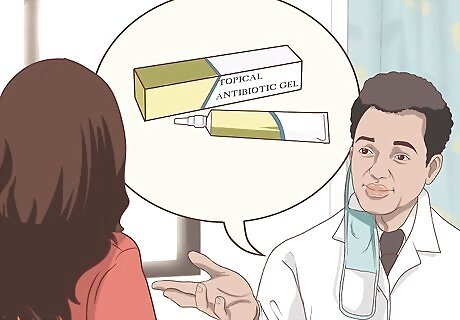
Apply antibiotic gel, if prescribed. Your dentist or periodontist may prescribe you antibiotic gel to apply to your gums twice daily after brushing, flossing, and irrigation. This gel kills bacteria, and will help get your periodontal infection under control.
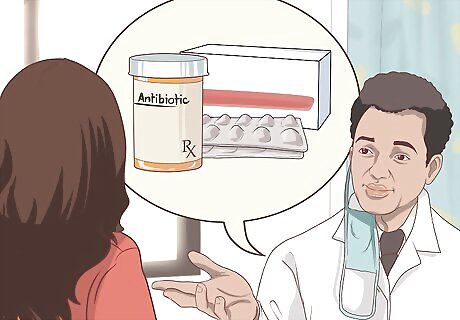
Take all oral antibiotics that were prescribed by your dentist or periodontist. Taken by mouth, these antibiotics can help kill the periodontal infection and also prevent the forming of new bacterial colonies, especially after a surgical intervention. Make sure to take these antibiotics as prescribed.
Undergoing Advanced Treatments for Periodontal Disease
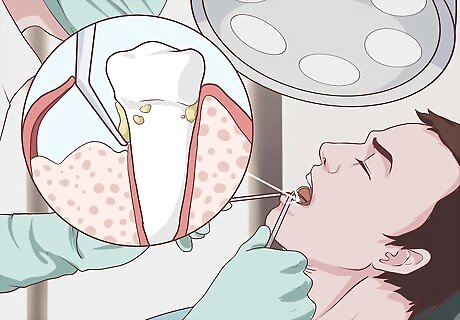
Undergo surgical treatment, if needed. In severe cases, periodontal disease must be addressed with surgery. The most basic surgical option is called flap surgery, in which your dentist or periodontist will make an incision in your gums, lifting them back to clean and remove the tartar, infected bone, and necrotic cementum underneath. The flap is then sutured back into place, up against your teeth. By creating a flap, oxygen can destroy a large number of aggressive anaerobic bacteria, which are almost impossible to eliminate even with deep scaling or cleaning.
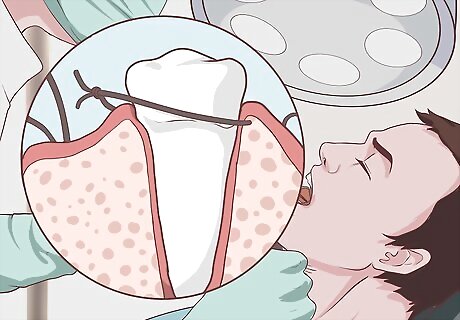
Get gum grafts and bone transplants. In severe cases, you may require a gum transplant to replace damaged gum tissue, and/or bone transplant or regeneration surgery to replace bone tissue that has been lost. These treatments are aimed at preventing as much tooth loss as possible, and to stop the advancement of periodontitis, which can have mutilating results. If you get a gum graft, soft tissue may be transferred from the roof of your mouth, or donor tissue may be used. A graft may be made of your own bone fragments, synthetic bone, or donated bone. Some doctors may also use guided tissue regeneration to facilitate the regrowth of your bones. A unique biocompatible film is placed between your bone and your tooth, allowing the bone to regrow.
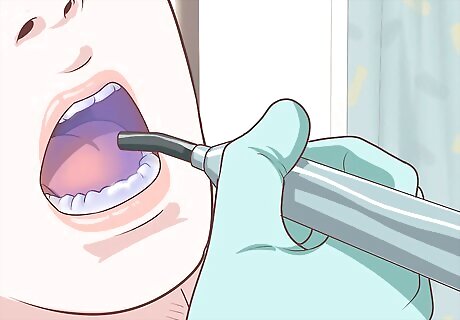
Ask about laser treatment options. Recent studies have shown that laser surgery may be as effective as surgery at resolving periodontal disease in certain cases. Ask your dentist or periodontist if this might be an option for you, but be aware that this is a new field that is developing rapidly, and that many insurances may not yet cover this kind of treatment.
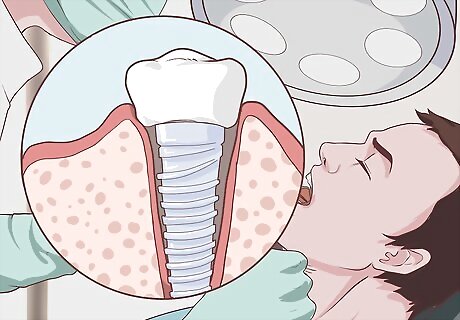
Look into dental implants. In some cases, one or more of your teeth may be lost to periodontal disease. In these cases, you can have the teeth replaced with high-quality dental implants. Speak with your dentist or periodontist to determine if dental implants are right for you regarding your medical history or any other health issues.













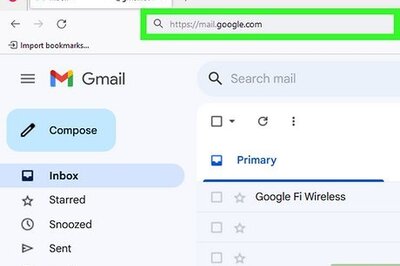




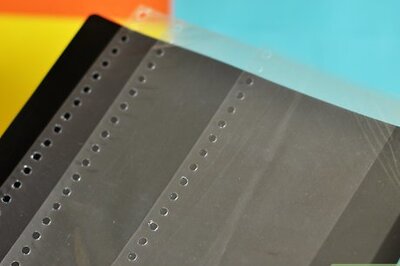
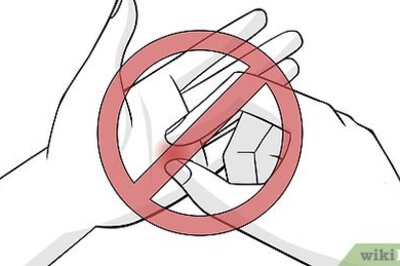
Comments
0 comment